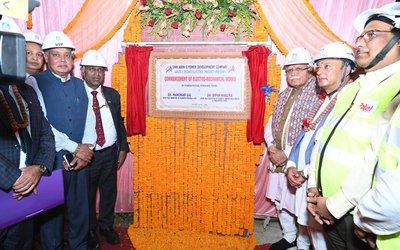
“The Hindu Kush Himalaya is an extraordinary region the rest of the world doesn’t know enough about,” said Cyril Kormos, Executive Director of Wild Heritage, speaking about the potential of the World Heritage Convention to bring needed visibility, protection, and accountability to sites in the Hindu Kush Himalaya (HKH) of outstanding natural and cultural value.
Currently, there are only 17 inscribed World Heritage sites in a region covering eight countries, four Global Biodiversity Hotspots, and some of the world’s highest and most iconic mountain ranges. The region is also home to more than 1,000 living languages and an extraordinary diversity of cultures. Despite the rich biodiversity and large expanses of wilderness and protected areas, half of the eight countries in the region do not have a natural World Heritage property. Thus, there is large potential for additional heritage sites in the HKH.
Experts and policy makers came together on 30 and 31 May 2019 to revisit existing sites in the HKH, and to explore potential sites and opportunities to link sites across international borders. Discussions during the two-day meeting on “Leveraging the World Heritage Convention for Transboundary Conservation in the Hindu Kush Himalaya” will feed into a comprehensive assessment report planned for the World Heritage sites of the HKH and also focused on providing guidance and clarity about the nomination process to countries interested in specific sites.
In the face of rapid global change, including climate change and large-scale infrastructure development, the Convention has been one of the most effective instruments for protecting large wilderness spaces and preserving natural capital for future generations. However, it is underutilized as a conservation instrument according to Tilman Jaeger, Senior Advisor at the International Union for Conservation of Nature (IUCN), the official advisory body to the World Heritage Committee on natural heritage.
“The Convention is a platform for countries to go beyond business as usual to create conservation gains,” Jaeger said. The protection of large intact wilderness areas is crucial to address threats to biodiversity and those posed by climate change.
Sindhu Dhungana, Joint Secretary of Nepal’s Ministry of Forests and Environment, highlighted the importance of transboundary collaboration in protecting the region’s heritage while promoting sustainable development. “Although balancing the protection of a place and the sustainable use of resources comes with many challenges, these can be faced with collective action,” he said.
The argument for taking a transboundary landscapes approach under the Convention is compelling; however, there have been limited systematic efforts to leverage it for conservation in a transboundary context. Particular focus during the meeting was given to exploring sites in landscapes shared by multiple countries where the International Centre for Integrated Mountain Development (ICIMOD) is currently working with governments, practitioners, and local communities to promote transboundary landscape management.
“Although there are gaps in our knowledge, we can’t let uncertainty keep us from moving forward. In this we have to keep climate change at the forefront of our minds,” said Sandra Elvin of the National Geographic Society. To assist in moving forward, the planned assessment report will contain a roadmap with gaps and recommendations for future decision making. Based on these and the interest of countries in the region, ICIMOD and other meeting participants will act to better conserve the region’s natural and cultural heritage.
Accordign to a press release issued by International Centre for Integrated Mountain Development (ICIMOD), the meeting was organized by Wild Heritage, International Union for Conservation of Nature (IUCN), and ICIMOD with support from the National Geographic Society.
The International Centre for Integrated Mountain Development, ICIMOD, is a regional knowledge development and learning centre serving the eight regional member countries of the Hindu Kush Himalaya – Afghanistan, Bangladesh, Bhutan, China, India, Myanmar, Nepal, and Pakistan – and based in Kathmandu, Nepal. Globalisation and climate change have an increasing influence on the stability of fragile mountain ecosystems and the livelihoods of mountain people. ICIMOD aims to assist mountain people to understand these changes, adapt to them, and make the most of new opportunities, while addressing upstream-downstream issues. We support regional transboundary programmes through partnership with regional partner institutions, facilitate the exchange of experience, and serve as a regional knowledge hub. We strengthen networking among regional and global centres of excellence. Overall, we are working to develop an economically and environmentally sound mountain ecosystem to improve the living standards of mountain populations and to sustain vital ecosystem services for the billions of people living downstream – now, and for the future.
Courtesy: ICIMOD
- Indian Power Minister Khattar Inspects Arun-III Project, Inauguration Of Koshi Corridor Postponed
- Apr 22, 2025
- US Reciprocal Tariff Is Likely To Be Limited: Experts
- Apr 22, 2025
- Nepal’s Snow Leopard Population Reached 397
- Apr 22, 2025
- Education Minister Bhattarai resigns from post
- Apr 22, 2025
- Foreign Minister Dr. Deuba Chaired Asia-Pacific region confronting
- Apr 21, 2025















